




| European Rabbit (Oryctolagus cuniculus (Linnaeus, 1758)) |





|
|
Scientific name: Oryctolagus cuniculus (Linnaeus, 1758) Common name: European Rabbit French name: Lapin de garenne Family: Leporidae Size: Body size : 34 to 50 cm; Weight : 1,2 kg to 2,5 kg; The ears are shorter than the Hare's ones and do not exceed 8 cm long. Biotope: Meadows, moor lands, bushes and forest mainly with dry conditions and soft sandy soil. Food: Vegetarian. Herbs during spring and summer, twigs and roots in winter. The European Rabbit also eats its own excrement. Longevity : Average of 2 years. Maximum of 9 years. Geographic area: Europe, North Africa. Introduced to Australia, New Zeeland and South America. |
The European Rabbit has a greyish russet brown fur which provides a good camouflage. The underside of the body is paler grey. Males have a slightly bigger head than females. The eyes are a dark colour. The tail is short. The underside of the tail is white. The European Rabbit is used to digging burrows which can make a large network by communicating with other burrows. The European rabbit has a high reproductive capacity. There may be 3 to 5 litters per year with about 6 young each time. Neonates, called kittens, are naked and blind. They are born in a specific burrow separated from the parents' home burrow. European Rabbits can sometimes cause important damages to cultivated fields. The main predators are the Red Fox, the Beech Marten and the Wild Cat. Populations are sometimes greatly reduced by myxomatosis epidemics. |
| [To know more about the European Rabbit] [Next picture] [Top] |
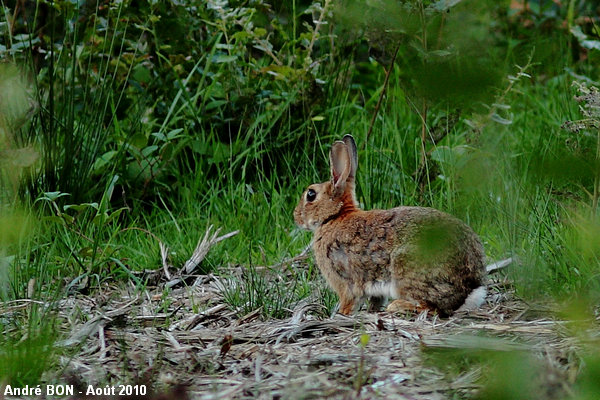
|
Yes, OK, this picture of a European Rabbit is not very good. As I know several places where you can observe many European Rabbits I promise that I will do specific photo sessions to update this page. Just be a little patient as I am a rather slow to update this web site … |
| [To know more about the European Rabbit] [Next picture] [Previous picture] [Top] |
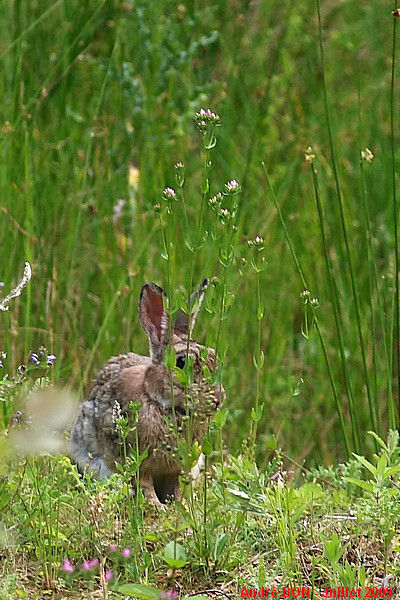
|
I have observed this European Rabbit during a walk thru the forest just before nightfall. And vice versa, this European Rabbit has observed me, hidden in wait behind a couple of grass stems. |
| [To know more about the European Rabbit] [Next picture] [Previous picture] [Top] |
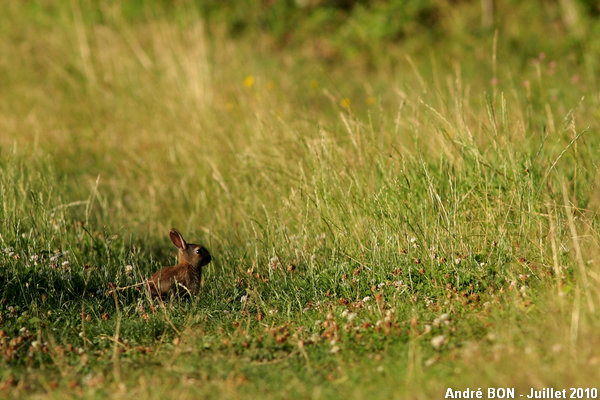
|
Isn't this baby rabbit very cute? |
| [To know more about the European Rabbit] [Next picture] [Previous picture] [Top] |
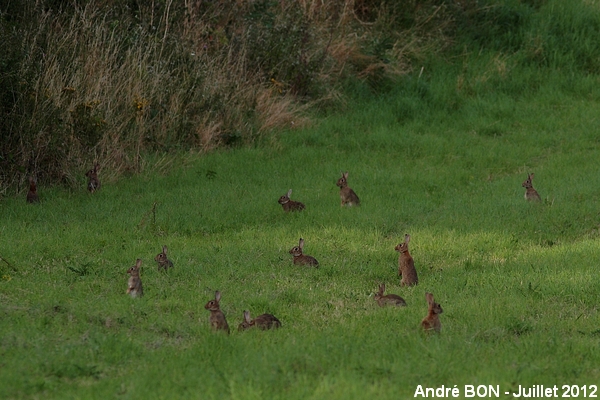
|
This is very crowded over there! |
| [To know more about the European Rabbit] [Previous picture] [Top] |
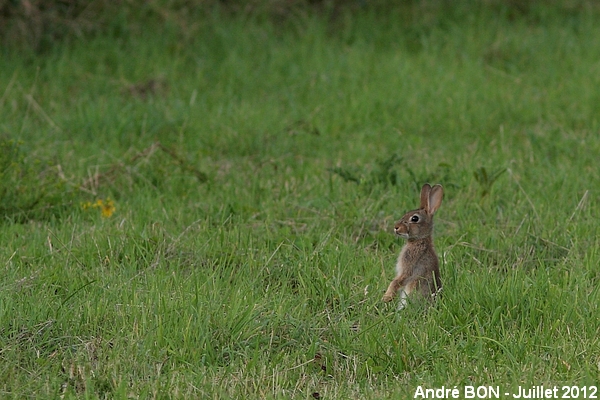
|
I have approached very slowly taking a picture from time to time. Here is the less shy one of the group. All its friends are already far away. |